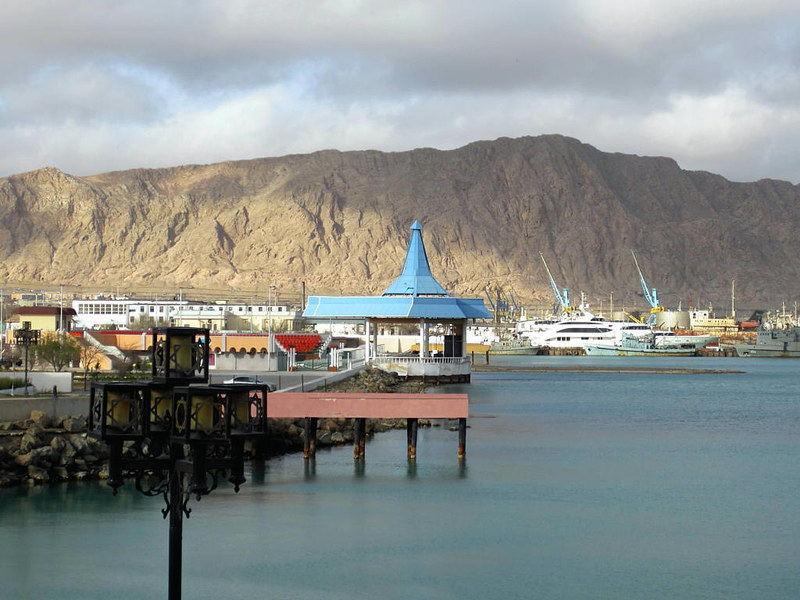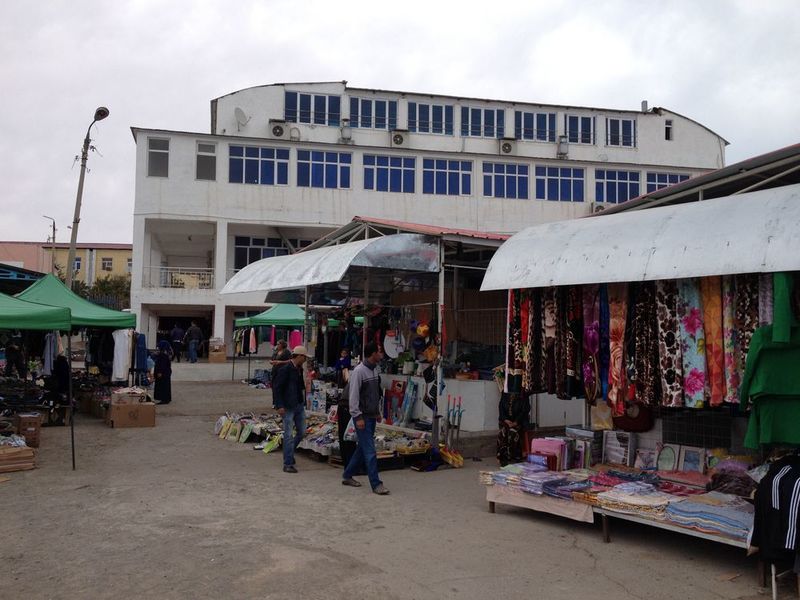Turkmenbashi in Turkmenistan is the site of a major port on the Caspian Sea, and a mix of cultural heritage and the modern world.
Turkmenbashi, Turkmenistan
This Turkmenbashi Travel Guide aims to cover all you need to know about Turkmenbashi, including visiting. Where to stay, what to see, and how to visit.
Feel free to skip to the relevant chapter below to answer all your questions on Turkmenbshi in Turkmenistan!
Introduction to Turkmenbashi
What to do in Turkmenbashi
Where to Stay in Turkmenbashi
How to Get to Turkmenbashi
Updated March 2024
Introduction to Turkmenbashi
Turkmenbashi City is a place worth visiting for anyone interested in the junction of late-Imperial Russian, modern, and future history. Thanks to its proximity to the bizarre Awaza Resort area.
It is situated on the Caspian Sea coast and is home to the major port of Turkmenistan.
History of Turkmenbashi
Formerly known as Krasnavodsk (Russian for Red Water, so named due to the reflection of the cliffs in the sea), the city was initially built by the Imperial Russian military.
At the time, the military was advancing into the Transcaspian to conquer, bring the railroad, and battle the British in the proto-Cold War known as the Great Game.
Turkmenbashi Today
Modern Turkmenbashi City is a sleepy town, with an air of the Mediterranean if mass tourism and low-cost flights had never been invented.
It is a place seemingly under-designed, which is rare in Turkmenistan.
A smattering of marble buildings, mostly though the near-ubiquitous Soviet-Era low apartment buildings dominate the city.
A steep hill bisects the two sides of the city. This means a walking tour either has to go around it (more pleasant) or over it (more grueling).
Visiting Turkmenbashi City
The waterfront (the highlight) is dominated by closed-off areas. Such as the Presidential Yacht, or abandoned ships and a decaying funfair.
If you walk further down the coast flat beaches can be found. This isn’t a good area for swimming, surfing, or sunbathing though. Here you'll find mostly dog walkers and lost tourists!
Despite all this seeming negativity, there is much to enjoy in Turkmenbashi.
Enjoying Turkmenbashi
The bazaar is lively. The cafes are pleasantly located. The city is walkable. And there is a good variety of things to see and do here too.
Coastal life in Central Asia is not common. So come and experience a little in this semi-charming town!

What to do in Turkmenbashi
There is a lot to do in Turkmenbashi. More than in most regional cities.
Below are the Turkmenbashi Highlights.
Japanese Cemetery
If you enter or exit by plane, via the amazing new airport, you will pass this small spot. Be sure to make a stop to be reminded of some tragic history.
As the USSR entered WWII late in the day in the Far East there was limited action against the Japanese. However, some POWs were taken and many of them were transported to the interior of the Soviet Union and put to work.
Much of the mid-20th Century centre of Turkmenbashi was built by these men, forced into a form of slave labour.
The central large-stone buildings were by them. As well as the cut-through road that makes its way from the airport plateau past the enormous gas refinery.
Many of them died and were buried at the edge of a local cemetery just outside the city.
Here you will find a monument, erected by the Japanese Government in their memory. It is simple and basic. But worth a stop.
The bodies were all taken back to Japan. So there is now just a monument and a rather extensive local cemetery alongside it.
Oil Workers Cultural Palace
The Oil Workers Cultural Palace is one of the buildings erected by the Japanese POWs. This is effectively the centre of the city.
A faded gold-painted statue of the Turkmenbashi himself in a chair sits here. While the building is usually closed, you might be in luck and be able to see a music or cultural show (or wedding) inside.
At least see the outside of the building.
Regional History Museum
The museum is not amazing but worth a look inside. Especially if you have an interest in dodgy taxidermy or photos of the development of the city.
It also includes maps and models of how nearby Awaza has been developed and what hopes are made for the future.
The museum can be found next to a sign celebrating the centenary of the foundation of the city of Krasnavodsk in 1969.
If you ask the curator there to explain the history of the building, they will tell you a great story about how this was the courthouse used to imprison the 26 Baku Commissars before their execution.
This story is one that was once universally known in the USSR and used as a prime example (including by Trotsky himself) of the perfidy of the British who are said to have carried out the arrest and murder of these heroes.
Gates to the East and West
Near the railway station, there are two run-down arches supposed to be in the Eastern and Western Styles pointing the way to Europe. Across the Caspian, and Asia. Across the Steppe.
This is hardly the Hellespont. But it is a good way to get a photo to show you stood in the middle of the world!
Cheryomushki Bazaar
This Bazaar is well worth a couple of hours of anyone’s time. Just for looking if not for actual shopping.
The stall holders are friendlier than in most of Turkmenistan. The stuff on sale is mostly the same imported rubbish you can find anywhere. But they also have a fish section, which may be fragrant but is also fascinating.
The Caspian Sea is the source of Caviar, of course. So if you want, this it can be found for very reasonable prices. Although anything you buy will be marked as ‘Product of Azerbaijan’ for a slightly dodgy reason. (Your guide can explain on the spot, let's not incriminate anyone here!)
Hit the cafes by the water and on the hill separating the town’s two parts. Watch people go by. Eat some baklava.
It’s a sleepy town. So act sleepy for a bit!
Where to Stay in Turkmenbashi
There are two late-Turkmenbashi (the person!) era hotels in the city itself.
The Hotel Turkmenbashi
This hotel is central but next to a main road. Plus, it's a bit of a trek from the town.
It has nice enough rooms but is usually a bit deserted. There is also a swimming pool, sauna, and a complicated and worthless wifi system.
This is where you would stay if you wanted to be in Awaza but all the hotels there were full. (Which has never happened).
Charclac (Seagull) Hotel
Otherwise, there is the Charclac (Seagull) Hotel. It is more central, has a better sea view, and a disco on weekends.
It's the best option if wanting to stay in Turkmenbashi.
Frankly, though you should be staying in Awaza if you are visiting this city.
That is a much better option unless you are there for several days (for example if stuck waiting for a ferry, see below!)
How to Get to Turkmenbashi
From Ashgabat, it is a 6 or 7-hour drive to Turkmenbashi.
Train
So, either take the train (overnight - cheap but a bit of a drag and hard to get tickets).
Flight
Alternatively, you can fly to the shiny and fancy but underused Turkmenbashi airport.
Ferry
The other way to enter/exit Turkmenbashi City is by ferry. Mainly to Baku in Azerbaijan, across the Caspian Sea.
This is an exciting and interesting way to go. It is recommended but with serious caveats and provisos.
Firstly, note that the ferry is not a cruise ship. It is mostly for cargo and vehicles. So there isn’t much to do on board.
Next, note that the official schedule is very much aspirational. You could find yourself waiting days for this to happen. So have a visa issued to cover you for any downtime you have to wait.
A 14-hour boat trip could take 14 hours, or 24, or 34 hours.
It is amazing, though, and the views from the deck of the oil rigs in the sea at night are both haunting and inspiring.
Give it a try if you have patience and time. And don’t mind having to pay a little baksheesh to get a decent room onboard!
Pro Tip: Take enough food with you. The restaurant on this boat may be open sporadically. Or not at all.
Koryo Tours
Turkmenistan Tours
Turkmenistan Travel Guide | Sign up to the mailing list | About Koryo Tours

